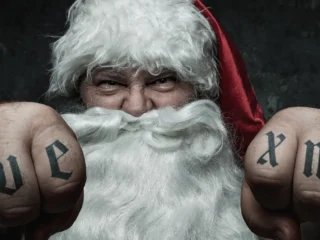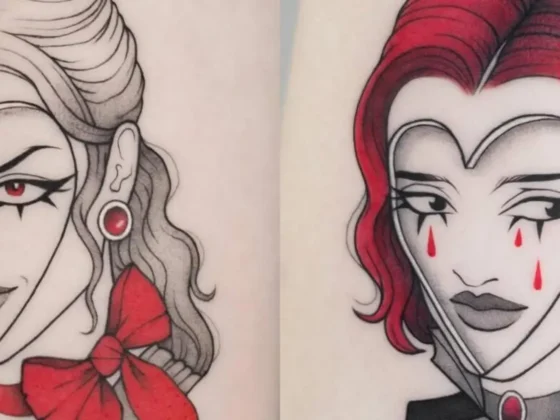Devon Preston
May 29th, 2019
Bound By His Art
Meet Multimedia Artist Jay Freestyle
How did growing up in South Africa impact you as an artist?I don’t think that had too much of an impact on me, as I was still very young when I lived in South Africa. Art back then was just a hobby; I’d occasionally draw if I was bored, but being in school, I was more concerned about getting through [school] as fast as possible. I never thought I’d end up being a professional artist. I guess if I think back now; I do find inspiration in African crafts (wire/wooden sculptures).
How did you get into painting?I actually got into painting after tattooing. Once I found my style, I wanted to be able to accurately portray paint effects (splashes, textures, drips, etc.). So, I had to learn to paint in order to be able to understand how the textures and movements are formed.How has your work evolved over the years?My style and tastes are forever changing. I love being fluid and constantly learning new things. Through tattooing, I’ve learned more about painting and through painting, I’ve learned more about art. The two go hand in hand with other, when one of them improves, so does the other. When I learn a new technique in painting, I automatically try and mimic it in my tattoos and vice versa. I’ve also been exploring painting with different mediums to get a broader [understanding] of what I prefer. I started with watercolor, then moved to acrylic, and now I’m learning oils. Each medium has helped evolve and shape my work over the years.
How did moving to Amsterdam impact your work?I think the culture shock was a good thing for me. South Africa is very conservative, and Amsterdam is much more liberal and free thinking. It helped open my mind and look at life with a different perspective. Before, I used to be very closed off and only follow what society deemed as “normal” It didn’t take long before I grew more open-minded and learned to have an appreciation for everything in life. Over the years, my work grew more abstract as I started to sway away from things that were too commercial.How does multi-media play a role in your art?It helps keep things fresh and interesting. With my shibari series, it gives the images an added 3D element, [making it] a more impactful visual. With my suspension pieces, which are paintings of bondage suspensions, the paintings are able to hang from ropes which is something that as far as I’m aware of has never been done before, thus giving the art an extra edge. I want to create artwork that showsthe beauty and elegance of something that is very misunderstood.
What first inspired you about shibari?My wife and I are into BDSM. It’s something that’s always been a part of our personal lives. From a young age, I’ve found Japanese rope bondage intriguing and beautiful. It’s something that I think you have to be involved in to fully understand. Society naturally deems it as sick or perverted because the average person doesn’t understand it. I think that also makes it more inspiring because it feels taboo, you either love it or hate it. It’s natural to want to paint things that I like, and the fetish scene is something that’s a part of my life and therefore something that will always inspire me. It’s interesting for me to see that for every ignorant idiot out there that gets offended by a painting, there’s a like-minded person who understands my work and appreciates it.Which fine-artists are some of your biggest inspirations?I would have to say Jeff Gogue, Chris Guest, Casey Baugh and Agnes Cecile.Do you ever use live models for your work?I do sometimes, if I can’t find the right pose I’m looking for. When I do use a model, I take a photo of them and work from reference.
What is the process for creating one of your paintings?It all starts with finding the right pose. I’m limited to the angle the body needs to be in because I naturally cannot make the ropes go in and out of perspective, they can only lie flat on the canvas. So the pose needs to almost always be completely head on or side profile, which generally is the worst angle to use for a painting. Once I’ve found the correct pose, the rest is pretty easy. The painting is the fun part. Once it’s done, I cut holes in the canvas where the ropes need to be threaded through and I carefully thread and knot them into place. The suspension pieces are a bit tricky, I have to build extra reinforcements on the back of the canvas so it’s strong enough to be held from the correct suspension points that are on the painting and not deter from the pose.What are your goals as a painter that you hope to accomplish in the next five years?I’d love to find the balance between painting and tattooing, that I can paint for half the week and tattoo for the rest. At the moment I’m only able to paint like 2-3 times a month if I’m lucky. I’ve just opened my own studio and art gallery so I finally have a place to exhibit my works properly. In the future I’d love to do solo exhibitions in other art galleries around the world. I’ve been wanting to publish a book about my art and tattoos. I’d like to teach workshops and do collaborations with other artists.
Editor's Picks
Chris Brown’s Face Tattoo Shows His Heart and Sole
Chris Brown has a brand new tattoo! Long gone are the days of the baby faced teen, Brown is all grown up and has the tattoo collection to prove it!…
Oh Me, Oh My
Chrissy Chlapecka on finding her voice, spreading self-love on TikTok and releasing her first single













